 If ever you were in any doubt of the painfully high price of printer ink, a feature on tech website Gizmodo shows a graph representing the relative values of various liquids compared to blood.
If ever you were in any doubt of the painfully high price of printer ink, a feature on tech website Gizmodo shows a graph representing the relative values of various liquids compared to blood.
According to the statistics, a $30 HP No45 black ink cartridge comes with just 42ml of ink, giving punters a price of $0.71 per millilitre for the ink.
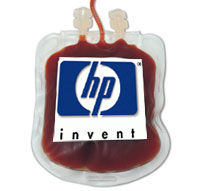 Penicillin comes in at around $0.6/ml, followed by vodka at $0.2/ml, bottled water at $0.1/ml and finally crude oil at something like $0.05/ml (it’s hard to be precise because the graph doesn’t come with a text breakdown).
Penicillin comes in at around $0.6/ml, followed by vodka at $0.2/ml, bottled water at $0.1/ml and finally crude oil at something like $0.05/ml (it’s hard to be precise because the graph doesn’t come with a text breakdown).
We’re not taking these figures entirely seriously (it’s a Monday after all, and we’re still waiting for the coffee to kick in) but, as a comparison, human blood knocks out for $200 for 500ml, according to uncited Red Cross figures.
This works out at to $0.40/ml, getting on half the price of printer ink.
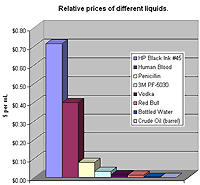 Punters have long complained about the outrageously high cost of printer ink – a 2003 study by the Consumer Association’s Which? Magazine found out that the humble smudgy stuff was priced ‘My Printer Hell’.
Punters have long complained about the outrageously high cost of printer ink – a 2003 study by the Consumer Association’s Which? Magazine found out that the humble smudgy stuff was priced ‘My Printer Hell’.
Meanwhile, those with a keen interest in the pricing of bodily fluids can examine the price of bull semen here, or perhaps peruse a comprehensive comparison of liquid costs from penicillin to ‘punky colour hair dye’ here.
Gartner: Printer ink costs more than perfume
[From Gizmodo]
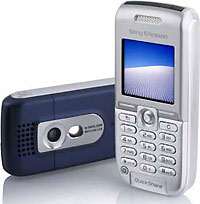 Global sales of camera phones are set to make up nearly half of the total of all mobile phone sales this year, with the figure expected to rise to 81 percent of all phones by 2010.
Global sales of camera phones are set to make up nearly half of the total of all mobile phone sales this year, with the figure expected to rise to 81 percent of all phones by 2010.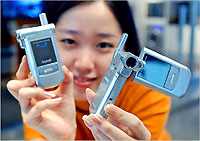 “In 2006, 1.3 and two mega pixel resolutions will become the minimum requirement for mid-tier to high-end phones and a 3.2 mega pixel resolution will be used for flagship products. This will increase to five mega pixels in 2007,” Milanesi said.
“In 2006, 1.3 and two mega pixel resolutions will become the minimum requirement for mid-tier to high-end phones and a 3.2 mega pixel resolution will be used for flagship products. This will increase to five mega pixels in 2007,” Milanesi said. If you’re having problems thinking of that perfect technological widget to make your Christmas go with a seasonal swing, look no further than Brando’s fabulous feast o’ festive trinkets.
If you’re having problems thinking of that perfect technological widget to make your Christmas go with a seasonal swing, look no further than Brando’s fabulous feast o’ festive trinkets. USB Fibre Optic Christmas Tree II
USB Fibre Optic Christmas Tree II USB LED Music X’mas Tree
USB LED Music X’mas Tree USB Drumming Santa
USB Drumming Santa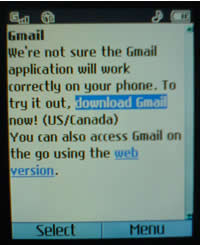 You’ve probably seen the news yesterday that
You’ve probably seen the news yesterday that 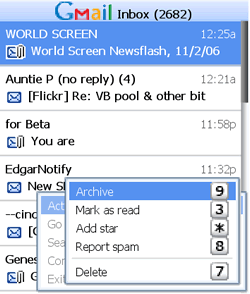 Being the inquisitive little ferrets that we are, we jumped on to our ever-at-hand mobiles to try the same thing. Not expecting much, as we’re outside the US, you can imagine our surprise when we were given the option of downloading the app – but persisted with the US/Canada only malarky. We were warned that the app might not work correctly.
Being the inquisitive little ferrets that we are, we jumped on to our ever-at-hand mobiles to try the same thing. Not expecting much, as we’re outside the US, you can imagine our surprise when we were given the option of downloading the app – but persisted with the US/Canada only malarky. We were warned that the app might not work correctly.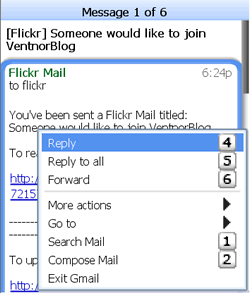 Argh .. the handset we used fell at the final hurdle, but we pressed on with some others until success! We checked in with
Argh .. the handset we used fell at the final hurdle, but we pressed on with some others until success! We checked in with 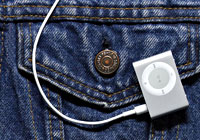 Apple has announced that the updated version of their teensy-weensy iPod Shuffle will be ready to tempt your wallet from today.
Apple has announced that the updated version of their teensy-weensy iPod Shuffle will be ready to tempt your wallet from today.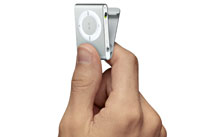 The Shuffle comes with a 1GB capacity – enough for around 240 tunes – and users can elect to play songs in sequence or randomly.
The Shuffle comes with a 1GB capacity – enough for around 240 tunes – and users can elect to play songs in sequence or randomly.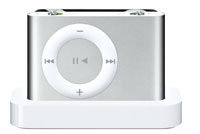 Apple has sold more than
Apple has sold more than 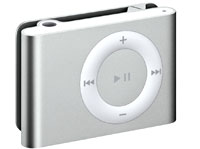 Windows system requirements
Windows system requirements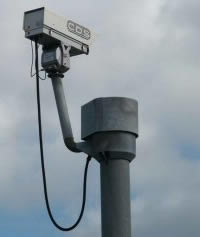 Britain’s Information Commissioner has published a study concluding that, within 10 years, surveillance of people living in the UK will be all-pervasive.
Britain’s Information Commissioner has published a study concluding that, within 10 years, surveillance of people living in the UK will be all-pervasive. He added: “As ever-more information is collected, shared and used, it intrudes into our private space and leads to decisions which directly influence people’s lives.
He added: “As ever-more information is collected, shared and used, it intrudes into our private space and leads to decisions which directly influence people’s lives. With the evenings drawing in and artic breezes circulating around your workstation, it may be time to invest in some handy USB-powered warming devices.
With the evenings drawing in and artic breezes circulating around your workstation, it may be time to invest in some handy USB-powered warming devices.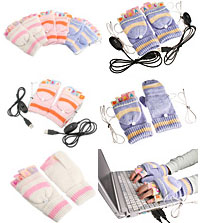 USB G-Gloves for girlies
USB G-Gloves for girlies Recently while travelling on an SAS flight, I had the pleasure of trying out the Connexion by Boeing service, which is an Internet service offered on long haul services.
Recently while travelling on an SAS flight, I had the pleasure of trying out the Connexion by Boeing service, which is an Internet service offered on long haul services.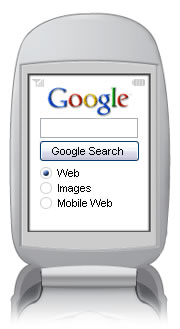 Browsing Gmail, Google’s email service, wasn’t particularly great when you did it from a mobile … until now. With the new release of gmail mobile that was launched today.
Browsing Gmail, Google’s email service, wasn’t particularly great when you did it from a mobile … until now. With the new release of gmail mobile that was launched today.